06/06 – 09/06 – Lofoten Islands, Sea Eagles & Puffins
Our next destination was the Lofoten Islands, where we hoped to be able to see some sea eagles (a.k.a. white-tailed eagles) and enjoy some great scenery and something of the remote island feel that we loved so much in Scotland’s northern isles last summer. Our first port of call was the island of Værøy, a small island (about 5 miles long) just to the south west of the southernmost of the larger islands, Moskenesøya.
The main ferry port for departures to the southern Lofoten Islands is Bodø. Ferries to Moskenes (on Moskenesøya) take about 4 hours, with a further 1.5 hours to Værøy. There are only two attractions on Værøy- walking and birds. Birds are best seen by taking a bird safari by boat from the harbour, as the cliffs on which they live are not really visible or accessible from land.
A video tour of Værøy:
We opted for the walking part of the deal and headed for the departure point of a walk to see the abandoned village of Måstad. Måstad was abandoned in the 1950s and was only accessible by boat, even when it was inhabited. The walk is described as a “tricky walk” in our guide and should take 2-3 hours. We found it surprisingly hard going – this walk requires lots of clambering over boulders and walking on very narrow, steep and uneven paths. It is not suitable for children or anyone without a reasonable level of agility and fitness.
Ferries to and from Værøy are limited and we did not want to get stuck on the island overnight. We caught the ferry off Værøy in the evening and made our way to Mosekenes, the ferry port on the island of Moskenesøya. The main Lofoten Islands are joined together by bridge so from here, we were able to make our way by road (toll free) onto the adjacent islands of Vestvågøy, Austvågøya and Hinnøya. In truth, we would not bother with Værøy again and would head straight to Moskenes, instead.
The scenery is impressive throughout the Lofotens but weather can vary dramatically – we had both perfect days of blue skies and sunshine and days of blustery rain and low cloud cover, which rendered the mountains all but invisible. We visited most of the standard tourist destinations – the historic fishing village of Å, which is picturesque albeit very touristy and the less impressive traditional fishing village of Henningsvær, which our usually reliable guide book claimed “richly deserves an overnight stay”.
In fact, Henningsvær is a tourist trap that seemed to have very little going for it. It is certainly a historic fishing village and many of the original buildings remain, but coach parties are wheeled remorselessly in and out and the whole place was singularly uninspiring. You may get an idea of the level of cynicism involved if I tell you that it is possible to take two-hour fishing trips for 750Nkr (£85) on a cod fishing vessel to see what cod fishing is like.
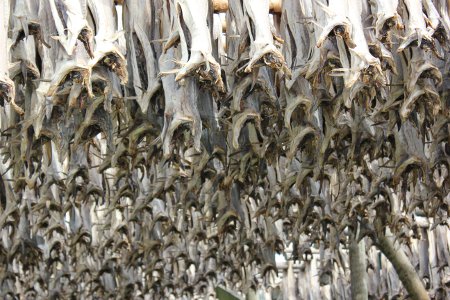
One of the reasons we decided to come to the Lofotens was because they are one of the best places in Norway (and Europe) to see Sea Eagles. The Lofotens are also jam-packed with great scenery. In both respects, the islands were very good to us. We took the 815 on Vestvagøya from Leknes to Sundklakk and saw three white-tailed/sea eagles circling above us at different times.
The following day, we took a Trollfjord/Sea Eagle Safari cruise from Svolvær. We had reservations about this, as it turns out that the eagles are lured close to the boat by feeding them with freshly caught fish. Although this is, realistically, the only way you will ever get such close sightings of these mighty birds, it does seem wrong to interfere with their natural hunting in this way.
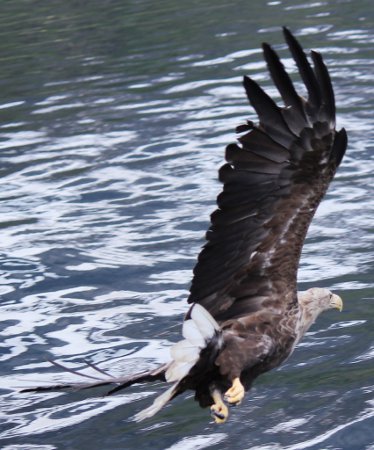
However, our desire to see the eagles overcame our scruples and we were rewarded with several distant sightings and three close sightings when the birds were fed (see my video below). Close to, they are seriously impressive predators.
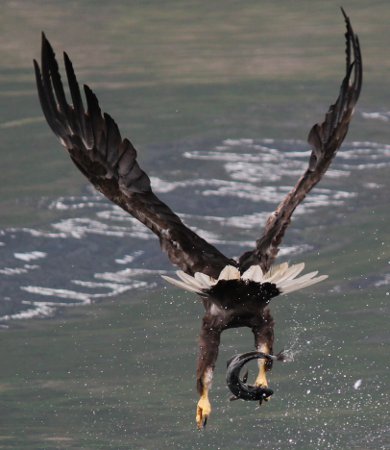
Sea Eagles off Svolvær:
The Sea Eagle cruises from Svolvær last 3 hours (or just over 1 hour if you opt for the fast RIB boats) and take you along the coast from Svolvær and into the Trollfjord, an impressive narrow fjord and a good place to spot sea eagles. Although the RIB option may seem attractive if you are pressed for time, I would caution against this. Five of the six eagles we saw were en route to and from the Trollfjord. If we had been in the RIB boat we would not have seen these nor have had the chance to photograph them. In this case, slow and steady is the best way to see the sights.
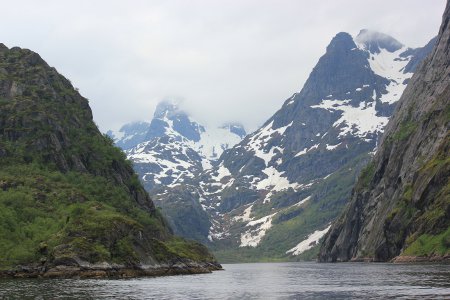
On leaving the Lofoten Islands we continued through the islands to the Vesterålen Islands and the island of Andøya. Our plan was to drive up through the island to Bleik, on the north-west coast, from where a Puffin Safari runs, to see the puffins (and sea eagles) on the nearby island of Bleiksøya. The drive up through the island was very scenic and was improved still more by taking the minor road (Fv976) up the west coast of the island (branch off Route 82 at Risøyhamn), past the Skogvoll Nature Reserve. Ever on the lookout for eagles, we were rewarded by a close sighting on this road – we pulled up to the side of the road and the eagle lazily flew right across the road in front of us. Amazing.
Bleik proved to be a sleepy place with a small fishing port. It’s also the base for the Puffin Safari operation (www.puffinsafari.no) which runs 1-2 bird-watching trips a day to nearby Bleiksøya, a small, uninhabited island that’s about 30 minutes away by fishing boat. Each trip includes a knowledgeable local guide who is a local fisherman in the winter but has a great knowledge of both local history and birds and speaks good German and English (like many Norwegians).
Unlike the Sea Eagle safaris of Svolvær, the Puffin Safari is completely unintrusive – the fishing boat simply holds station just off the island and allows you plenty of time to observe the bird life. We saw several eagles as well as a great many puffins, cormorants and other sea birds. Each trip is around 1.5 hours and cost 350Nkr per person. I would recommend Puffin Safari over Svolvær’s Sea Eagle Safaris as it provides a more authentic experience, doesn’t interfere with the wildlife, and includes a very knowledgeable and interesting guide. Bleiksøya is also far less touristy than Trollfjord, which gets visitors on bumboats from cruise ships as well as at least four or five Sea Eagle safari services that run from Svolvær harbour.
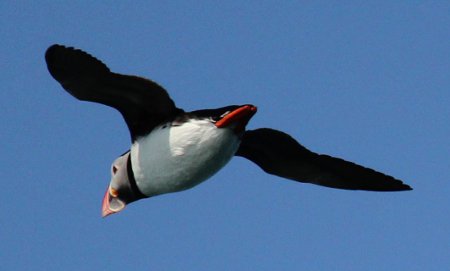
We left Andøya via the seasonal (summer only) ferry from Andenes, which is just a few kilometres up the coast from Bleik. This turned out to be a lively crossing but did save a lengthy drive, the fuel for which would only have cost marginally less than the ferry charge of 575Nkr for our sub-6m van. The ferry from Andenes arrives at Gryllefjord on the island of Senja, which is joined to the mainland by road bridge. A drive through Senja is highly recommended – the scenery is excellent and the island is much less touristy than the Lofotens. The entrance to the fjord on the ferry is stunning.

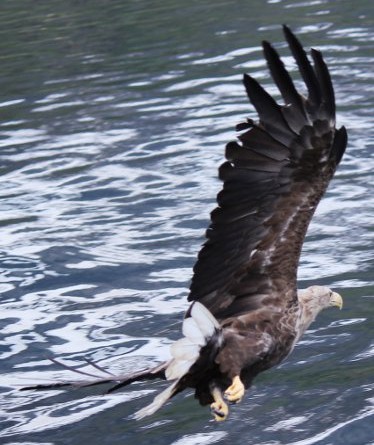
Pingback: Norway 2016 Teil 2 – ivkazabka314